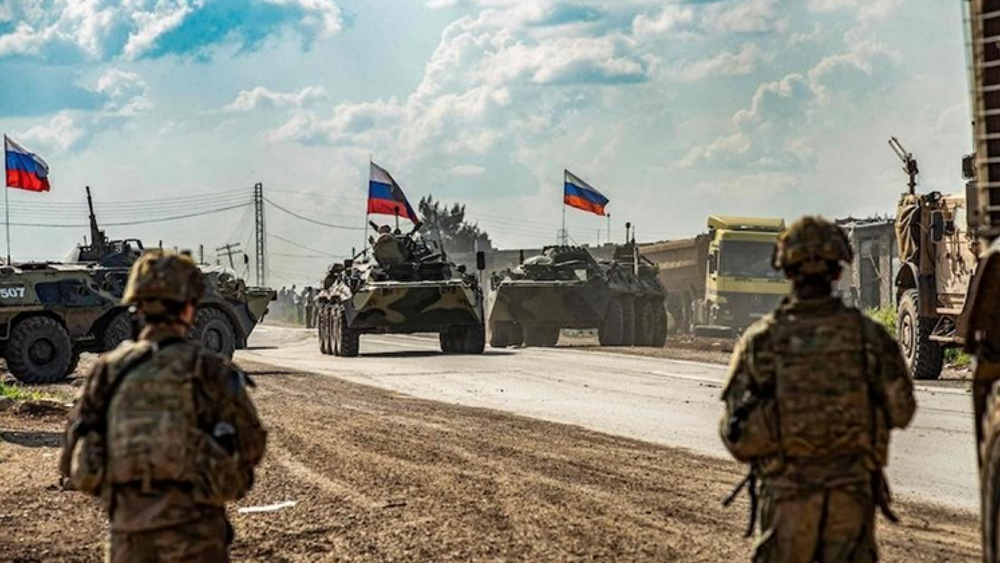Russia has recently escalated its military endeavors in the Syrian desert, with a notable increase observed during the past week. This surge in activity can be attributed to the retaliatory response following the operation conducted by IS, on August 11, wherein Syrian army forces were targeted, leading to the unfortunate demise of 20 soldiers and the injury of 10 others.
Concurrently, Russia has displayed a growing inclination towards conducting intensified aerial bombardments on suspected IS strongholds in the Badia region. This development prompts inquiries regarding the extent to which Russian military intervention can effectively impede the organization’s sustained operational capacity over an extended duration.
Diverse engagement
Russian forces deployed in Syria employed a strategy of operational diversification to counter the heightened activities of IS factions in the Syrian desert. These factions executed a number of undisclosed operations, alongside a notable assault on Syrian army forces. The Russian engagement against IS can be characterized by the following aspects:
1- Multiple bombing operations were conducted on IS sites by Russian forces in Syria. Although official data on the nature of these operations is not available, reports from Russian media indicate that the Russian forces utilized precise missile strikes launched from battleships off the Syrian coast. The target of these operations was a site located between the deserts of Homs and Hama.
It is worth noting that this approach is not new for Russia, as they have previously employed similar tactics in recent times. However, the bombing of an IS site in the Badia region raises concerns about the decision to use missile launches instead of relying on traditional airstrikes carried out by warplanes. These airstrikes were conducted in response to an attack on Syrian army forces.
2- Russian involvement in operations against IS went beyond bombing operations and included participation in sweeping operations conducted by units of the Syrian army to track down members of the terrorist organization. Notably, the combing operations, in which Russian forces also took part, were not confined to a limited scope but rather expanded. The 17th Division and the 18th Division, operating under the regime forces, carried out these operations, with artillery support provided by the 11th Division. The Syrian Observatory for Human Rights reported the involvement of armed militias loyal to the Syrian regime in these operations.
Russia’s Dilemma
Despite the considerable level of Russian engagement in countering IS subsequent to the assault on the Syrian armed forces, this does not invalidate the predicament that Russia faces in Syria, particularly in terms of addressing the organization’s activities in the Badia region. The most notable aspects of this predicament include:
1- The lack of pre-emptive measures against IS: The operational strategy employed by the Russian forces in Syria to combat IS can be described as reactive. Their intense military engagement is primarily focused on pursuing IS members and specifically targeting locations suspected to be IS strongholds in the Badia region. It is noteworthy that the activities of IS have escalated during this period.
Consequently, the Russian forces do not typically escalate their military operations against IS unless the organization carries out significant operations, particularly those targeting the Syrian army. In such cases, the Russian forces respond with increased involvement, while showing a reduced level of engagement if the targeting of civilians becomes more widespread.
The primary transformation observed in Russian military involvement against IS was associated with the backdrop of the Russian-Ukrainian conflict. Initially, Russian air strikes in the Badia region ceased due to Russia’s focus on overseeing military operations in Ukraine during the initial stages of the war. However, they later resumed conducting air strikes, albeit at reduced frequencies and intermittently. In general, the Russian strategy does not demonstrate a willingness or capability to initiate preemptive strikes against IS.
2- The limited intelligence role in the desert: It appears that the Russian forces, along with the Syrian army and Iranian militias loyal to the Syrian regime, are facing a crisis in dealing with the structure of IS, which was imposed by the conditions of the field reality after 2019, relying on small groups for activity. Operational, to avoid targeting large concentrations of the organization, which are exposed by aerial monitoring operations, whether by Russia, or the United States of America, which leads the international coalition forces to confront IS in Syria.
The organization’s operations are characterized by their reliance on surprise tactics to target conventional army forces. These operations are carried out with limited opposition, as well as a lack of emphasis on intelligence gathering to monitor the constantly changing movements of the organization’s members, thereby preventing effective tracking.
The international coalition, spearheaded by the United States of America, has been actively engaged in targeted operations against IS since the previous year. These operations primarily focus on neutralizing the organization’s leadership and influential figures, with the aim of curbing its operational capabilities.
3- The propaganda dimensions in Russian operations: Considering the organizational structure of IS and Russia’s predominant reliance on aerial bombardment operations, a significant inquiry arises regarding the efficacy boundaries of such bombardments against the members of the organization. This inquiry acknowledges the consequential impact of bombing operations in compelling the organization to diminish the intensity and frequency of its operations during aerial bombardment.
However, it is noteworthy in this particular context that the primary emphasis on aerial bombardment operations appears to be ineffective, considering the fragmentation of the organization’s components into smaller factions that can disperse during such operations and seek refuge in multiple directions within the expansive and challenging desert terrain. This observation highlights the propagandistic nature of Russian aerial bombardment operations, particularly due to their failure in eradicating the presence of IS in the Badia region despite their persistent execution over the past few years. Instead, these operations may only result in a temporary reduction of activity.
4- In view of the limited recognition of Russia’s intelligence involvement in the Badia region for combating IS, it becomes evident that Russia is extending its aerial bombing campaigns to encompass locations and gatherings of armed factions in northern Syria, which are outside the jurisdiction of the Syrian military.
There were no recorded instances of air strikes in the Badia region aimed at IS in recent days. However, according to reports from local media, Russian aircraft conducted bombing operations to target locations in northwestern Syria.
5- The geographical extent of the threat is manifold: The menace posed by IS to both Russia and the Syrian army transcends the confines of the Badia region alone. It also encompasses the Damascus countryside, where two IS operations occurred during the commemoration of Ashura. Furthermore, the threat extends toward the southern part of the country, particularly due to the ongoing activities of the organization’s cells, which continue to target Syrian army personnel. These attacks persist even after the clashes that transpired in the city of Jassim last year, which are believed to have resulted in the death of the organization’s leader at that time, Abu al-Hassan al-Hashimi al-Qurashi, in mid-October 2022.
This presents a significant obstacle for Russia, considering its role in facilitating the settlement agreement between the Syrian government and opposition armed groups in the Daraa Governorate. Consequently, Russia has taken action in the Damascus countryside, particularly in response to the increasing occurrence of assassinations since the start of this year, as reported by the Syrian Observatory. This has led to the deployment of Russian security patrols in certain regions.
Transient Impact
The enhanced military campaigns initiated by Russian forces in Syria have constrained the operational endeavors of IS, particularly in the Badia region. However, this impact is transitory given the absence of a well-defined approach to address the menace posed by IS. The organization has been striving to adjust to the alterations transpiring in the Syrian landscape and to recuperate from the severe setbacks it has endured in the past few years, resulting in the depletion of numerous leaders, personnel, and financial resources.


